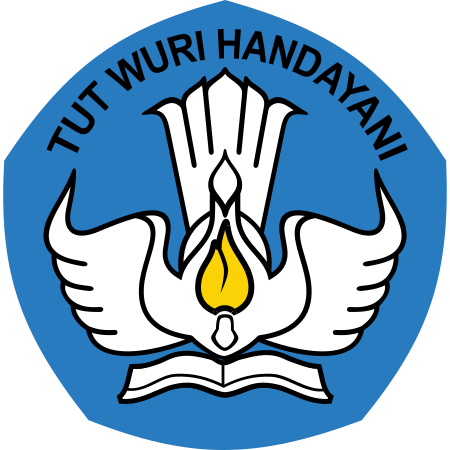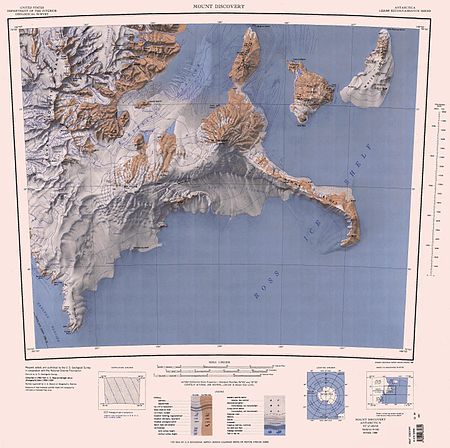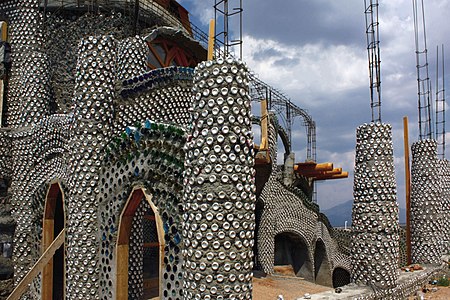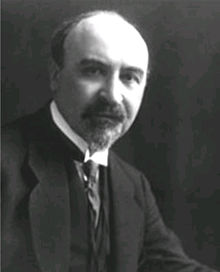Leo Baekeland
| |||||||||||||||||||||||||
Read other articles:

Railway station in Greater Manchester, EnglandRingley railway station redirects here. For the closed station near Bury, Greater Manchester, see Ringley Road railway station. KearsleyKearsley railway station in 2018General informationLocationKearsley, BoltonEnglandGrid referenceSD752054Managed byNorthernTransit authorityGreater ManchesterPlatforms2Other informationStation codeKSLClassificationDfT category F2HistoryOriginal companyManchester, Bolton and Bury RailwayPre-groupingLancashire and Yorks…

Questa voce sull'argomento centri abitati del Belgio è solo un abbozzo. Contribuisci a migliorarla secondo le convenzioni di Wikipedia. Segui i suggerimenti del progetto di riferimento. La Roche-en-Ardennecomune La Roche-en-Ardenne – VedutaVeduta LocalizzazioneStato Belgio Regione Vallonia Provincia Lussemburgo ArrondissementMarche-en-Famenne AmministrazioneSindacoJean-Pierre Dardenne TerritorioCoordinate50°10′54″N 5°34′30″E / 50.181667°N 5.575°E5…

بيتر فينش (بالإنجليزية: Peter Finch) معلومات شخصية الميلاد 28 سبتمبر 1916(1916-09-28)لندن، إنجلترا الوفاة 14 يناير 1977 (60 سنة)بيفرلي هيلز كاليفورنيا سبب الوفاة احتشاء عضل القلب الجنسية المملكة المتحدة، أستراليا الحياة العملية المهنة ممثل اللغات الإنجليزية سنوات النشاط 1934-1977 الجوا�…

SDN 1 PinoguSekolah Dasar Negeri 1 PinoguInformasiJenisSekolah DasarAkreditasiBNomor Pokok Sekolah Nasional40500898Kepala SekolahIsmail B. Tangahu S.PdModeratorNelson MabuiaJumlah kelas9Rentang kelasI-VIKurikulumkurikulum KTSPJumlah siswa190 orangStatusNegeriAlamatLokasiJln. Ahmad Nadjamudin, Bone Bolango, Gorontalo, IndonesiaKoordinat0°32′09″N 123°07′50″E / 0.5359000°N 123.1306000°E / 0.5359000; 123.1306000Moto SD Negeri 1 Pinogu atau nama leng…

Questa voce sull'argomento centri abitati della Bassa Sassonia è solo un abbozzo. Contribuisci a migliorarla secondo le convenzioni di Wikipedia. Segui i suggerimenti del progetto di riferimento. SpringeCittà Springe – Veduta LocalizzazioneStato Germania Land Bassa Sassonia DistrettoNon presente CircondarioHannover TerritorioCoordinate52°13′N 9°33′E / 52.216667°N 9.55°E52.216667; 9.55 (Springe)Coordinate: 52°13′N 9°33′E / 52.2166…

First season of the American TV series Mayans M.C. Season of television series Mayans M.C.Season 1Promotional posterStarring J. D. Pardo Clayton Cardenas Sarah Bolger Michael Irby Carla Baratta Richard Cabral Raoul Max Trujillo Antonio Jaramillo Danny Pino Edward James Olmos No. of episodes10ReleaseOriginal networkFXOriginal releaseSeptember 4 (2018-09-04) –November 6, 2018 (2018-11-06)Season chronologyNext →Season 2 The first season of the American television drama serie…

WWE livestreaming event NXT Stand & DeliverPromotional poster featuring Roxanne Perez, Carmelo Hayes, Ilja Dragunov, Tony D'Angelo, Trick Williams, and Lyra ValkyriaPromotionWWEBrand(s)NXTDateApril 6, 2024CityPhiladelphia, PennsylvaniaVenueWells Fargo CenterAttendance16,545[1]WWE Network event chronology ← PreviousElimination Chamber: Perth Next →WrestleMania XL NXT Stand & Deliver chronology ← Previous2023 Next →— NXT major events chronology ←…

Child's Play 1 beralih ke halaman ini. Untuk film tahun 2019 yang berjudul sama, lihat Child's Play (film 2019). Untuk waralaba media, lihat Child's Play (waralaba). Child's PlayTheatrical Release PosterSutradaraTom HollandProduserDavid KirschnerDitulis olehDon Mancini (story)Don Mancini andJohn Lafia andTom Holland (screenplay)PemeranCatherine HicksChris SarandonBrad Dourif Alex VincentDinah ManoffTommy SwerdlowJack ColvinNeil GiuntoliPenata musikJoe RenzettiSinematograferBill ButlerPenyu…

Antarctica mountain For the mountain in the Trinity Peninsula, see Dimaryp Peak. For the mountain in the Quartermain Mountains in Victoria Land, see Pyramid Mountain (Antarctica). The PyramidThe PyramidThe Pyramid Highest pointCoordinates78°21′S 163°30′E / 78.350°S 163.500°E / -78.350; 163.500 (The Pyramid)GeographyContinentAntarcticaRegionVictoria Land The Pyramid (78°21′S 163°30′E / 78.350°S 163.500°E / -78.350; 163.5…

Railway station in Uttar Pradesh, India Baghpat Road railway stationIndian Railways stationIndian Railways logoGeneral informationLocationBaghpat, Uttar PradeshIndiaCoordinates28°57′26″N 77°16′20″E / 28.9573°N 77.2722°E / 28.9573; 77.2722Elevation229 metres (751 ft)Owned byIndian RailwaysOperated byNorthern RailwayPlatforms2Tracks4 (single diesel BG)ConnectionsAuto standConstructionStructure typeStandard (on-ground station)ParkingNoBicycle facilitiesNoOth…
Disorder of mental function whose cause is alleged to be known as physiological This article needs additional citations for verification. Please help improve this article by adding citations to reliable sources. Unsourced material may be challenged and removed.Find sources: Organic brain syndrome – news · newspapers · books · scholar · JSTOR (April 2020) (Learn how and when to remove this message) Medical conditionOrganic brain syndromeOther namesOrganic …

提示:此条目页的主题不是萧。 簫琴簫與洞簫木管樂器樂器別名豎吹、豎篴、通洞分類管樂器相關樂器 尺八 东汉时期的陶制箫奏者人像,出土於彭山江口汉崖墓,藏於南京博物院 箫又稱洞簫、簫管,是中國古老的吹管樂器,特徵為單管、豎吹、開管、邊稜音發聲[1]。「簫」字在唐代以前本指排簫,唐宋以來,由於單管豎吹的簫日漸流行,便稱編管簫爲排簫,�…

Scottish painter and designer For other people named Duncan Grant, see Duncan Grant (disambiguation). Duncan GrantSelf Portrait, 1920, National Gallery of ScotlandBornDuncan James Corrowr Grant(1885-01-21)21 January 1885Rothiemurchus, Aviemore, Inverness-shire, ScotlandDied8 May 1978(1978-05-08) (aged 93)Aldermaston, Berkshire, EnglandOccupation(s)Artist, designerKnown forMember of the Bloomsbury GroupPartner(s)Vanessa BellPaul Roche Duncan James Corrowr Grant (21 January 1885 – 8 Ma…

County in New Mexico, United States County in New MexicoTaos CountyCountyTaos Mountain from El Prado SealLocation within the U.S. state of New MexicoNew Mexico's location within the U.S.Coordinates: 36°34′N 105°38′W / 36.57°N 105.63°W / 36.57; -105.63Country United StatesState New MexicoFoundedJanuary 9, 1852SeatTaosLargest townTaosArea • Total2,204 sq mi (5,710 km2) • Land2,203 sq mi (5,710 km2) …

Species of mammal Central American tapeti Conservation status Least Concern (IUCN 3.1)[1] Scientific classification Domain: Eukaryota Kingdom: Animalia Phylum: Chordata Class: Mammalia Order: Lagomorpha Family: Leporidae Genus: Sylvilagus Species: S. gabbi Binomial name Sylvilagus gabbi(J.A. Allen 1877) Synonyms Sylvilagus brasiliensis gabbi J.A. Allen (1877) The Central American tapeti (Sylvilagus gabbi) or Gabbi's cottontail is a species of cottontail rabbit native to southe…

Regional fast food restaurant chain in the Southern United States Chicken ExpressChicken Express location in Commerce, TexasIndustryFast FoodFounded1988; 36 years ago (1988)Benbrook, Texas, United StatesFoundersRichard StuartNancy StuartHeadquartersBurleson, Texas, U.S.Number of locations200+Key peopleRichard Stuart, Nancy Stuart, Founders Abby RingProductsFried Chicken, Chicken Tenders, and other sides.ParentStuart Group, Inc.Websitechickene.com Chicken Express is a regional c…

Law enforcement agency Public Security ServiceViešojo saugumo tarnybaAbbreviationVSTAgency overviewFormed18 October 1991; 32 years ago (1991-10-18)Jurisdictional structureOperations jurisdictionLithuaniaGoverning bodyMinistry of the InteriorConstituting instrumentLaw on the Public Security Service 2006Operational structureHeadquartersM. K. Paco str. 4, 10309 VilniusWebsitevstarnyba.lrv.lt/en The Public Security Service or VST (Lithuanian: Viešojo saugumo tarnyba) is a Lithuan…

Play Buoyant Billions1949 edition with designs by Clare WinstenWritten byGeorge Bernard ShawDate premiered21 October 1948Place premieredSchauspielhaus ZürichOriginal languageEnglishSubjectA billionaire's daughter meets a world bettererGenrecomedySettingPanama; London Buoyant Billions (1948) is a play by George Bernard Shaw. Written at the age of 92, it was his last full-length play. Subtitled a comedy of no manners, the play is about a brash young man courting the daughter of an elderly billion…

Phone used to pronounce a single phoneme For the term for someone whose native language is not French or English, typically used in Canada, see Allophone (Canada). A simplified procedure to determine whether two sounds represent the same or different phonemes. The cases on the extreme left and the extreme right are those in which the sounds are allophones. This article contains phonetic transcriptions in the International Phonetic Alphabet (IPA). For an introductory guide on IPA symbols, see…

Proto-germanico †Parlato inPenisola scandinava, Jutland, Germania centrale e settentrionale, Fiandra PeriodoEtà del bronzo - II secolo a.C./I secolo a.C. LocutoriClassificaestinta TassonomiaFilogenesiLingue indoeuropee Lingua proto-germanica Mappa delle culture dell'età del ferro associate al proto-germanico, ca 500 a.C.-50 a.C. L'area a sud della Scandinavia è la cultura di Jastorf Manuale La lingua proto-germanica, nota anche come la lingua germanica, è la lingua considerata come an…





